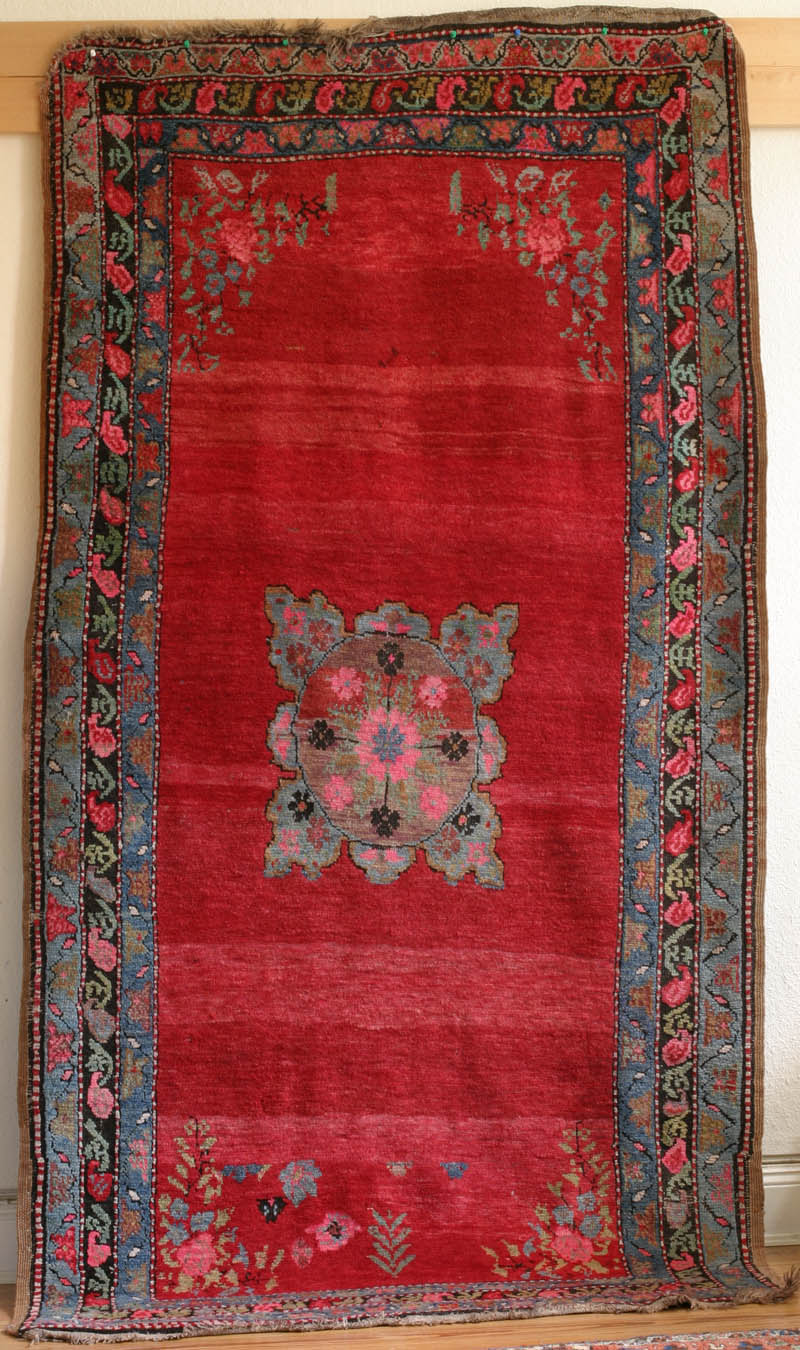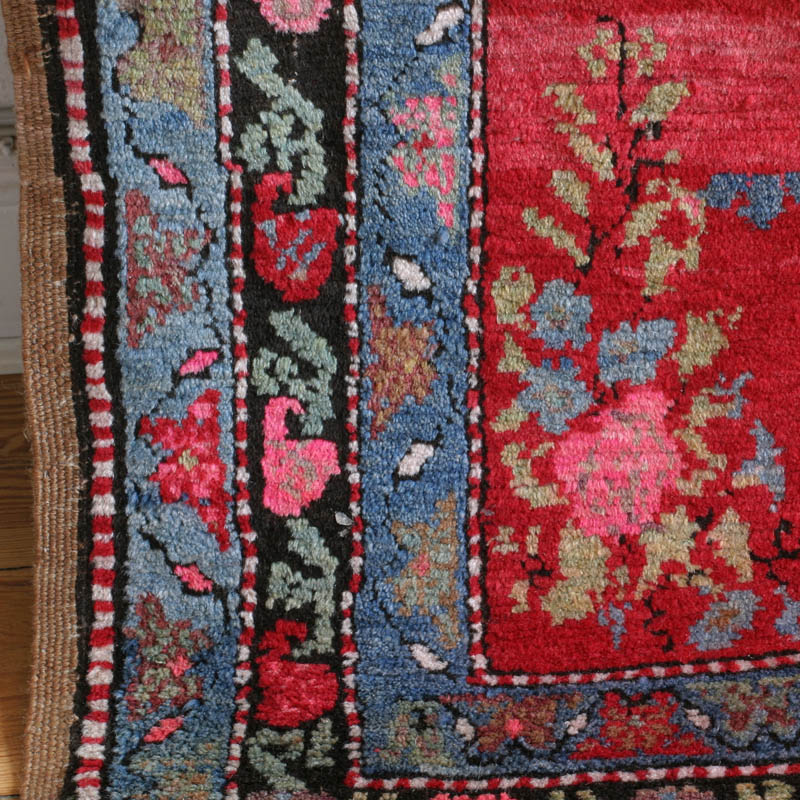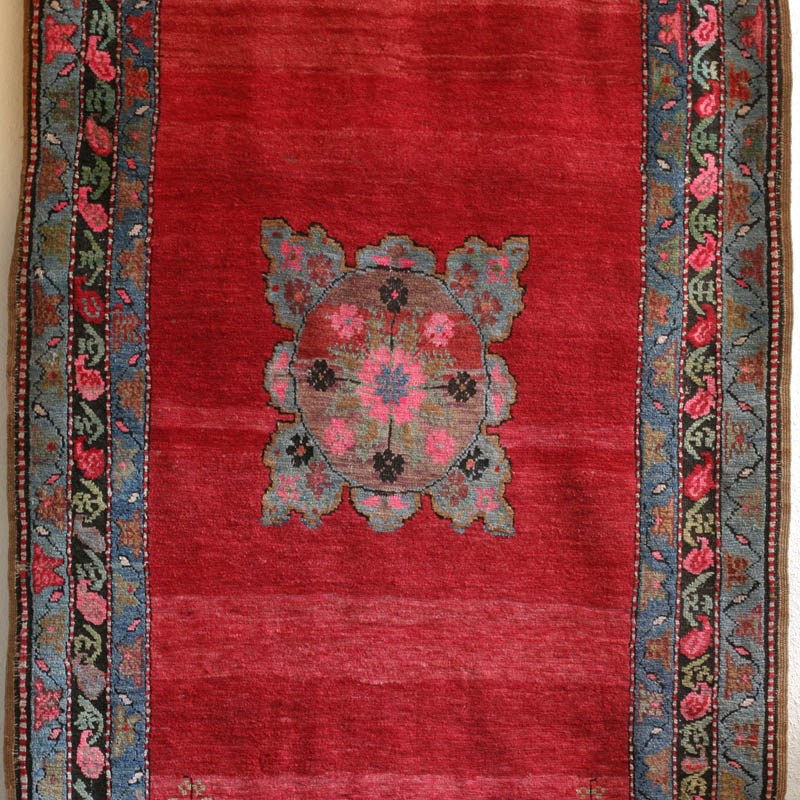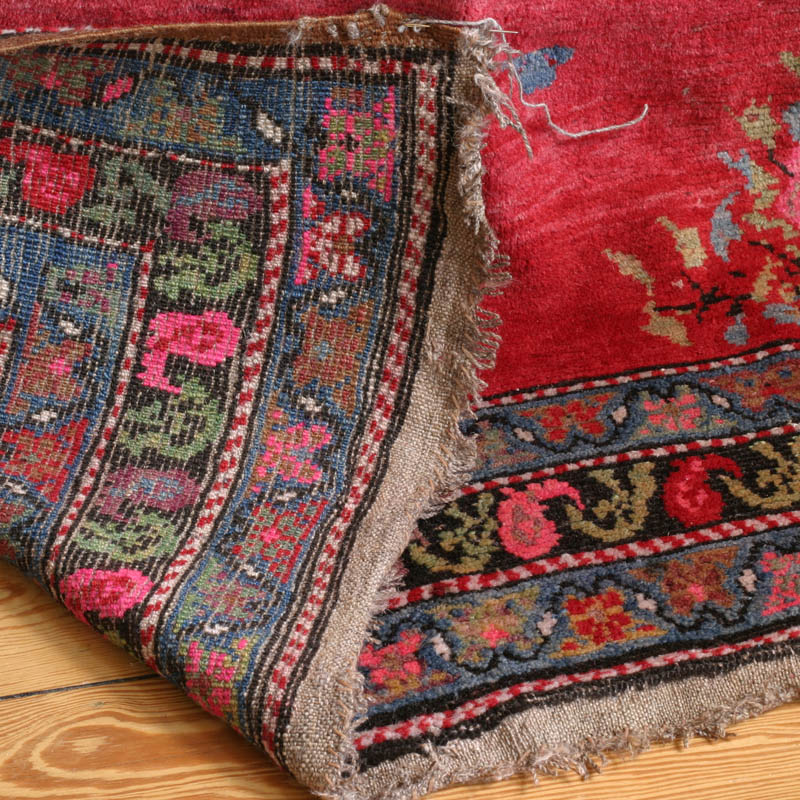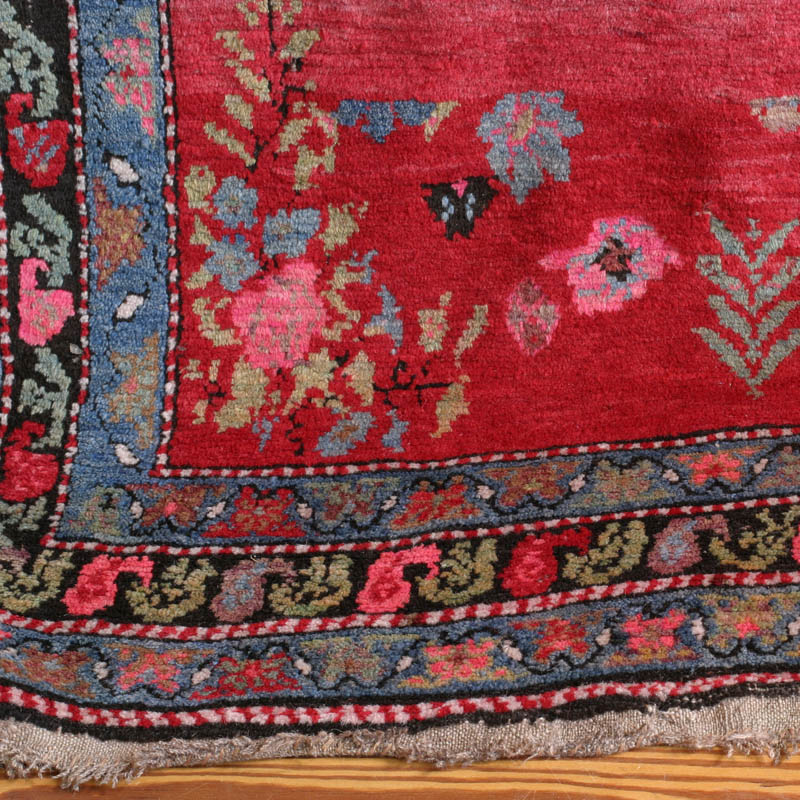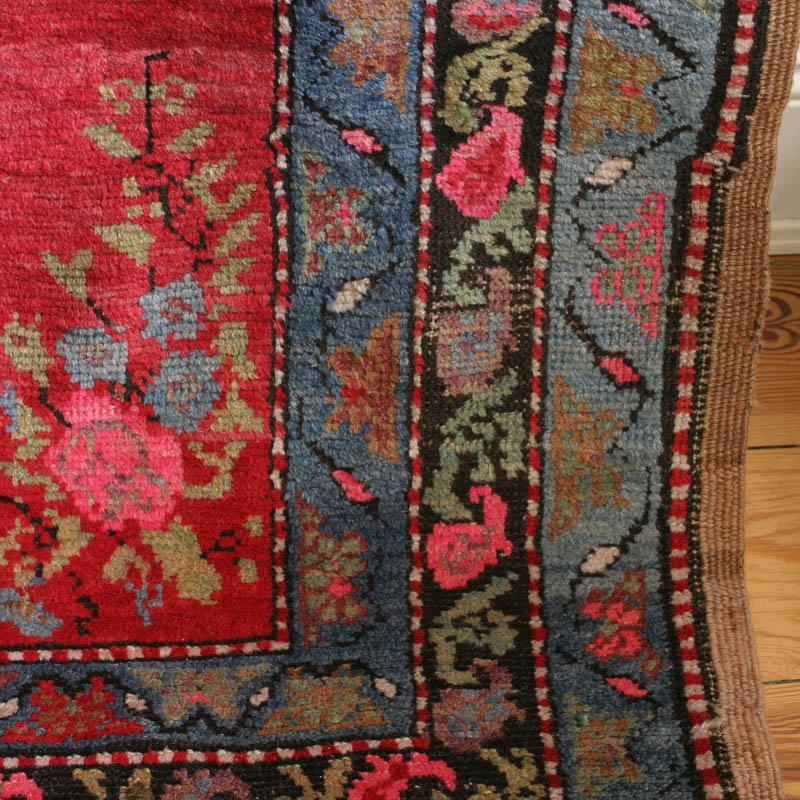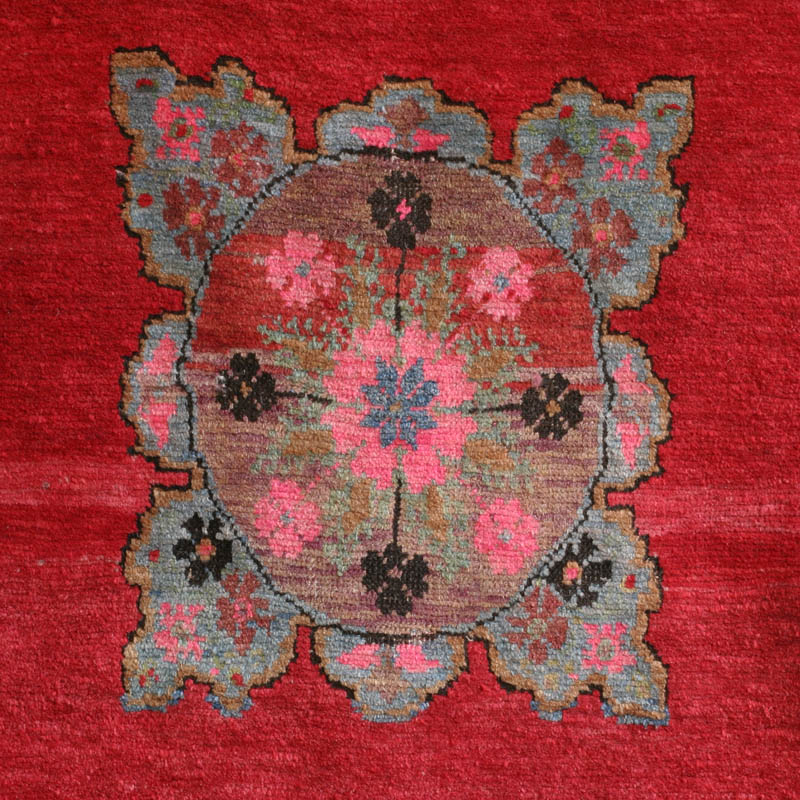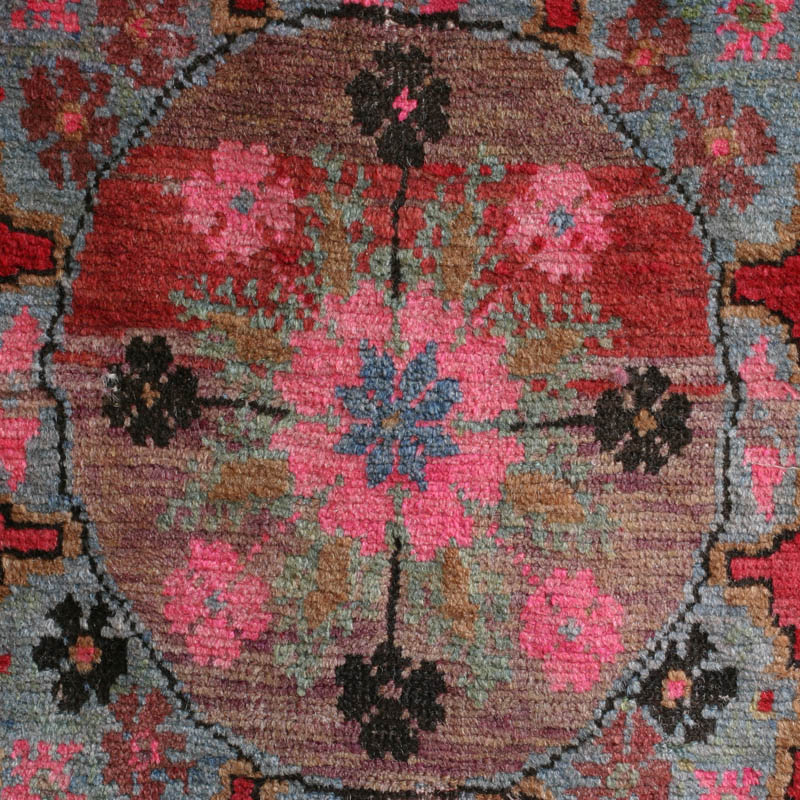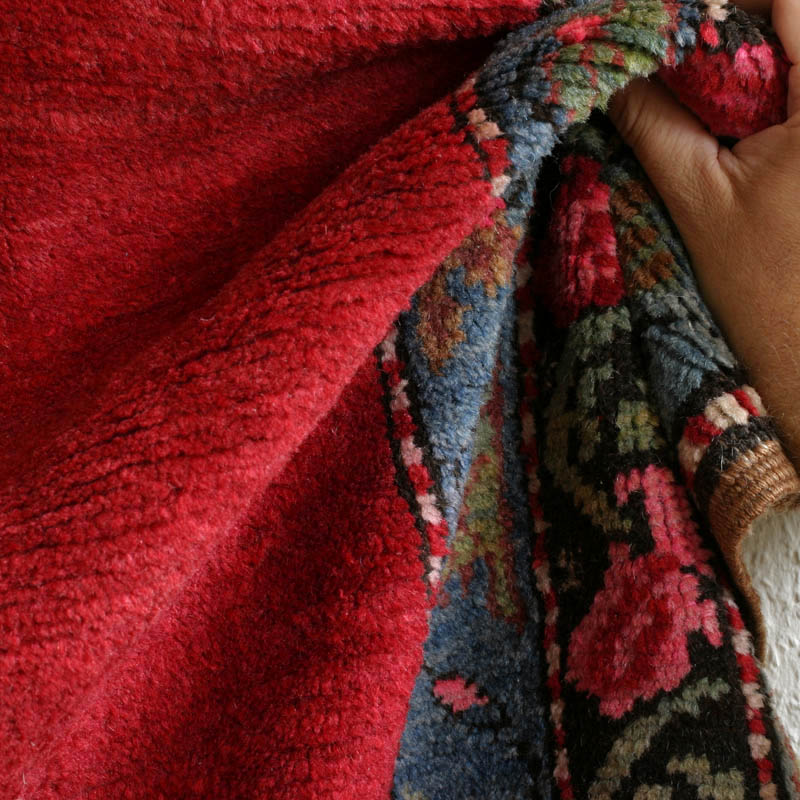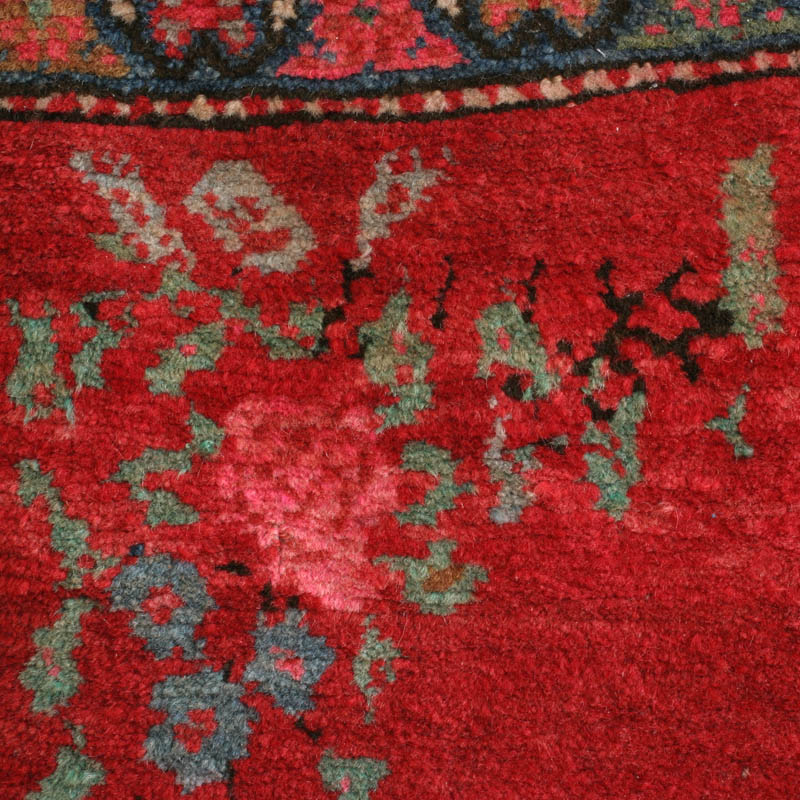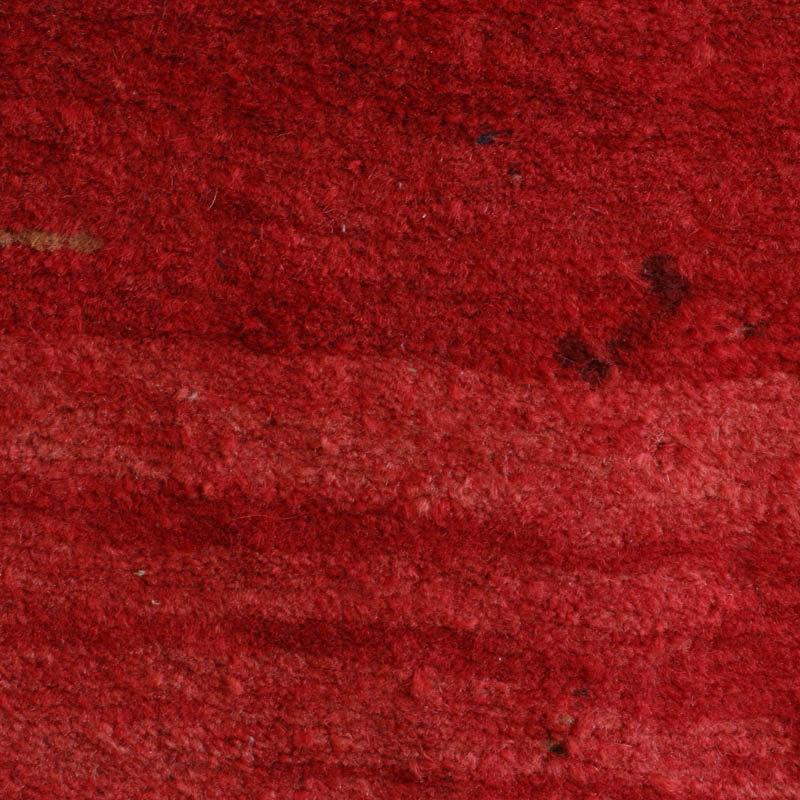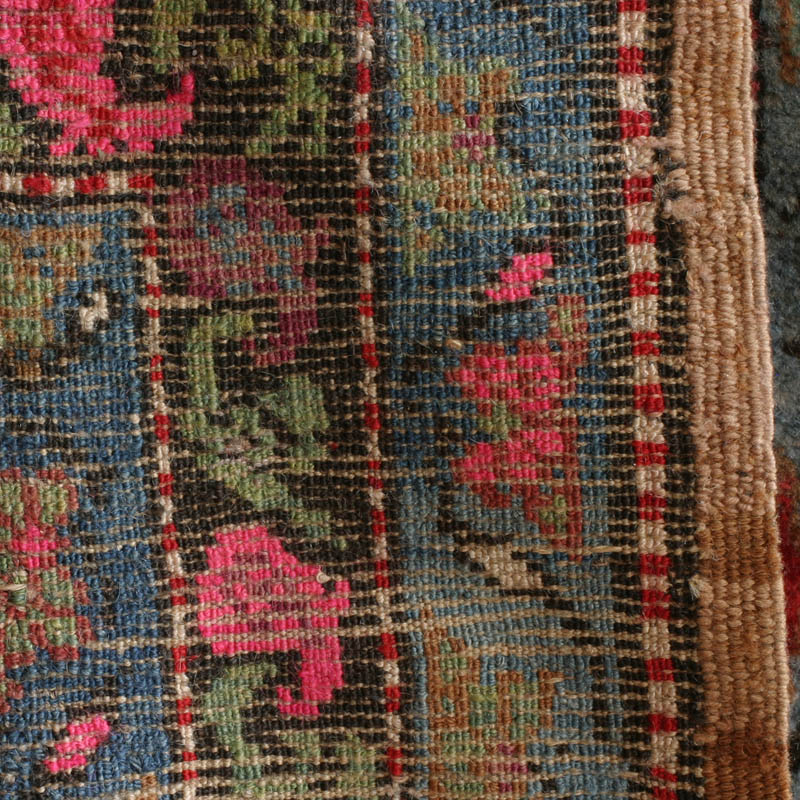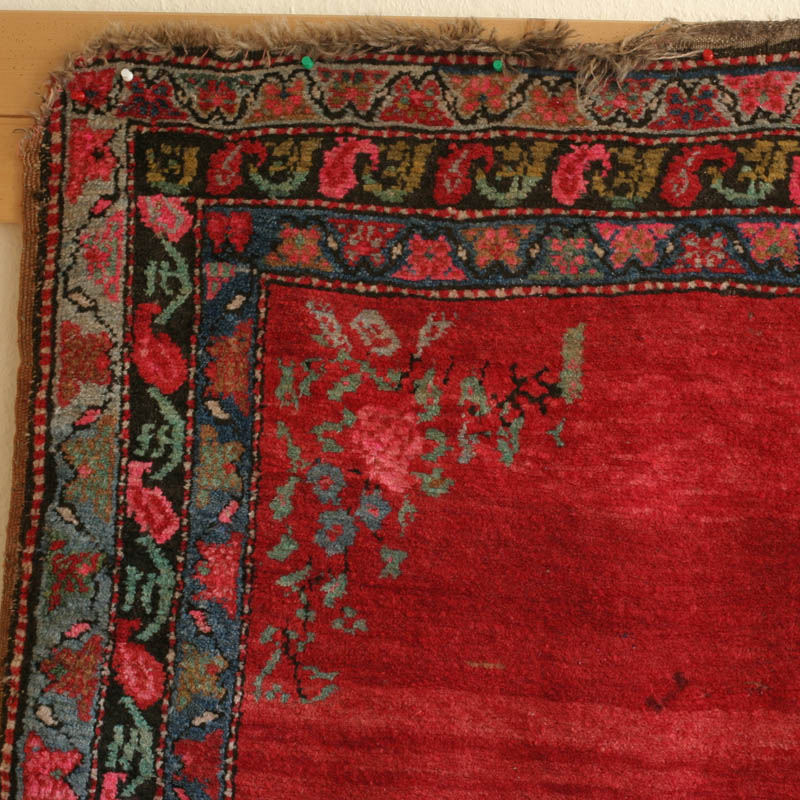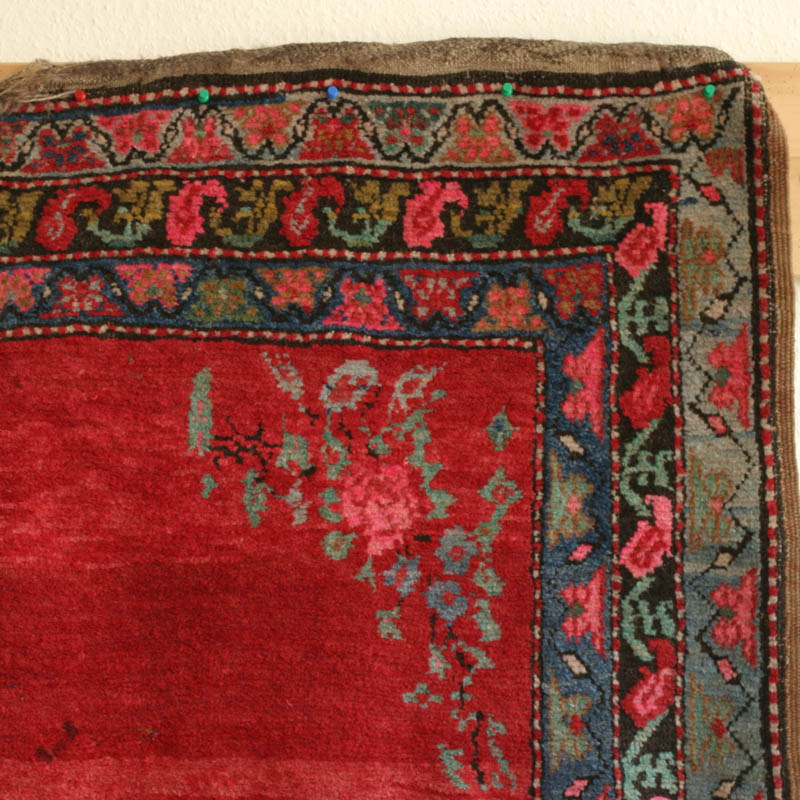Note:The photos have been made indoors from a tripod, with diffuse daylight coming from the windows, which means the lighting is not quite even (less light in the top areas of the rug).
A beautiful, charming full-pile Caucasian Karabagh rug, probably dating some time between 1890 and 1920, with a squarish, very tender kind of medallion that I have not seen before. Could be made by an Armenian or Kurdish weaver. I fell in love with this rug at an auction in Berlin some time ago (or rather, with the image in the catalogue that made me travel there and wait for hours, since the proceedings were much delayed). On closer inspection it turned out that this rug was first of all very sandy and dusty, about twice its current (de-sanded, de-dusted, carefully hand-washed) weight, and that it had been violated in some way so it bore many small and hardly visible cuts, as if someone had stabbed it repeatedly and randomly with a dagger. I find this puzzling and have no idea what has caused this kind of damage, maybe sharp furniture legs. I spend many evenings repairing the foundation at all the 'cut wounds' I could find, by threading in new warp and weft as appropriate. Apart from two or three knots, I have not attempted repiling the various places where between about 1 and 4 pile knots were lost in the process. These places are hardly visible since the pile is quite long. Could be done quite easily, I guess, but I am not sure how colour-fast my selfdyed pile yarn is, so I would rather leave this to a professional. Personally, I don't think it is necessary to do.
As so often, I was attracted to the somewhat loose and improvised rendering of the rose bushes and other vegetal forms, for examle, in the lower left corner. The medallion has something sweet and shy, it's not an attention grabber, but provides a nice and calm central focus on the expanses of abrashed red ground.
The predominantly blue border system consisting of three narrow borders without main border provides a nice contrast to the red ground. Two Kurdish with blossoms that look more shaped like butterflies, frame a dark-ground border with botehs (or bent flower heads?) seemingly growing from a green curving vine. These borders are effectively outlined by narrow striped borders in red and white (white is otherwise hardly used.
This rug can be used as is, but has all the right fundamentals (especially the full pile!) to be restored by a professional to very good condition.
The rug measures 8ft.2in. x 4ft.2in. (249 x 128 cm). The weave is not usually depressed (i.e., warps are on the same level, in some area irregular mild warp depression), two weft shots after each row and quite dense with a double pile thread, not very regular (could have been a production outside the Caucasian workshops). Knot count is about v.27/10 h.23/10 = ca. 620 knots per dm (or v.7, h.6 knots per inch = 42 kpsi) Both warps and wefts are greyish-brown wool playing into cinnamon, some warp threads of the salt-and pepper variant with a lighter and a darker thread twined. Two, sometimes three sinuous weft shots after each row of knots. The 3–5 cord selvages are wide and flat,overcast in tan wool / cinnamon-coloured wool. The bottom end retains a bit of kilim, the top end, as already mentioned, is of the twining variant but only one half of it is intact.
Overall, beautiful full pile condition, slightly lower toward the centre, meaty, soft and lush, a true pleasure to feel. I have carried out numerous small repairs to cuts in the foundation mostly hardly visible even from the back, with very minor pile loss at a few places (I tried to retain as much as possible the original pile, put in altogether only about 5 new knots). The ends have been secured before washing by stiching with a wool thread, could be done better but prevents for now unravelling. There is a small dark stain that did not get out during washing (see one of the close-up images), not too annoying, but could be repiled of course.
I have also repaired part of the lower end flat selvages (it came out in a slightly lighter shade of tan, but I personally think it does not matter much.)
Of the upper end executed in twining, only the right half is intact, the left half is fraying with some corner loss. I contemplated repairing the corner but have in the end decided against it.
Very nice saturated dyes, no tip fading, discoloration or bleeding. There is the abrashed red of the ground, possilby a synthetic dye or a mi af madder and syntheitc, but very pleasing, not least throigh the bands of abrash shading into a lighter tone of red. The borders use nice indigo blues and a greenoish blue, also with some abrash. Then there is the tan brown, a brown shading into purple, black, greens, and a strong pik that you will either love or loathe. I personally find the colour combination very attractive.
